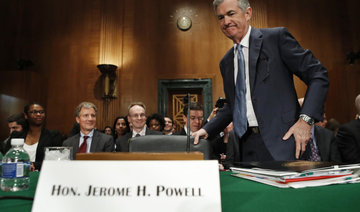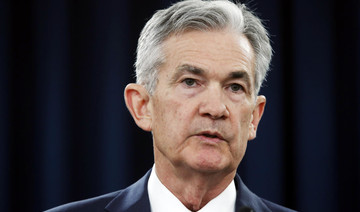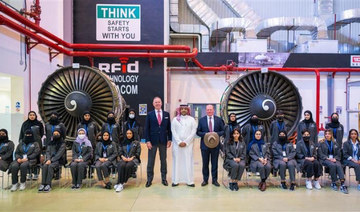SYDNEY/SINGAPORE: China, Taiwan and New Zealand sat tight after the Federal Reserve’s latest rate hike, but Indonesia and the Philippines pulled the trigger on Thursday to prop up their battered currencies and temper risks to inflation and financial stability.
In a statement that marked the end of the era of “accommodative” policy, Fed policymakers lifted rates by 25 basis points (bps) to 2.00-2.25 percent. The US central bank foresees another hike in December, three more next year, and one in 2020.
The Fed outlook is pressuring Asian currencies across the board, but not all countries need to tweak their policy. New Zealand is comfortable with a weaker kiwi as it helps its exporters. In China, a weaker yuan does raise concerns about capital outflows, but its currency is tightly managed and it also has capital control tools to mitigate financial risks.
For countries that run widening trade deficits, however, weaker currencies are posing risks to inflation, growth and financial stability.
“Economies such as India and Indonesia are more exposed to outflows ... We will continue to see further depreciation in 2018 and throughout 2019, although perhaps at a slower pace,” said Carlos Casanova, APAC economist at Coface, who expects more hikes in the two countries and Philippines.
Bangko Sentral ng Pilipinas hiked rates by 50 bps to 4.50 percent to curb inflation and shore up the fragile peso, adding to the three hikes worth 100 bps since May.
In August, inflation surged to a more than nine-year high of 6.4 percent, above the central bank’s 2-4 percent comfort range.
Bank Indonesia added 25 bps to its four previous hikes this year, bringing rates to 5.75 percent as expected, or 150 bps higher since May.
The peso is trading around its lowest in 12 years, having shed some 8 percent against the dollar year-to-date, while the rupiah is around a two-decade low after a 9 percent plunge.
Asia’s worst performing currency, the rupee, which has weakened by more than 12 percent to record lows, is also likely to be a key consideration for Reserve Bank of India, which is expected to hike by 25 bps next week.
All three currencies ended steady on Thursday.
One potential silver lining for the Asian deficit trio may be that the Fed is underestimating the impact of its past and future hikes as well as other factors such as the trade war on the global economy, and implicitly, the recoil back home, some analysts say.
Against a backdrop of slower-than-expected Fed tightening, ING Asia economist Prakash Sakpal sees 75 bps worth of hikes in Indonesia, 125 bps in Philippines and 100 bps in India by end-2019, including Thursday’s increases.
“This (Fed) tightening will likely prove too much for the rest of the world,” said Anna Stupnytska, global economist at Fidelity International.
“The Fed will have to strike a more cautious tone.”
The Hong Kong Monetary Authority moved in lockstep with the Fed as its currency is pegged to the greenback.
For the stronger Asian economies, which are increasingly gravitating toward China on trade and investment, and away from the US, the Fed outlook does not move the needle as much as it did during its previous tightening cycles.
South Korea’s central bank Governor Lee Ju-yeol said the Sino-US trade conflict, as well as weakness in inflation and the job market weighed against policy tightening.
Taiwan left rates unchanged at 1.375 percent, while the Reserve Bank of New Zealand kept them at 1.75 percent, where they have been for the past two years, citing tepid inflation and the risk of a trade war.
Like most economies in Asia, New Zealand is now much more closely integrated with China than with the US.
Worries that China’s economy is slowing and will further suffer from an intensifying trade row with Washington are therefore more relevant for most Asian economies’ interest rate outlook than the strength of the US economy.
New Zealand now trades about twice as much with China than it does with the US, a consequence of Beijing’s staggering growth over the last two decades.
When Lehman Brothers collapsed in 2008, triggering the global financial crisis, New Zealand traded with the US 1.35 times more than with China.
“China’s economic outlook matters more than the US,” said Mark Wills, who develops multi-asset strategies for institutional clients at State Street Global Advisers.
China’s central bank skipped open market operations on Thursday, meaning it did not immediately adjust borrowing costs for interbank loans after the Fed hike. The People’s Bank of China stood pat in June, but raised rates slightly in March shortly after Fed’s move.
Despite the trade risks and slowing consumption, China is still seen growing at an impressive rate of around 6.5 percent this year. For Asian emerging markets, this is an advantage that they have over peers in Latin America and elsewhere.
That, coupled with less worrying current account deficits and stronger economic prospects, is likely to help Asia avoid the kind of tumult that has seen Argentina hike rates to 60 percent and Turkey to 24 percent this year.
“Asian central banks have been vigilant, and pre-emptive ... in running their monetary policies,” said Frances Cheung, head of Asia macro strategy at Westpac Banking Corporation.
“They gain credibility in this cycle.”
China, New Zealand shrug off US Fed rate hike, but push Philippines and Indonesia into action
China, New Zealand shrug off US Fed rate hike, but push Philippines and Indonesia into action
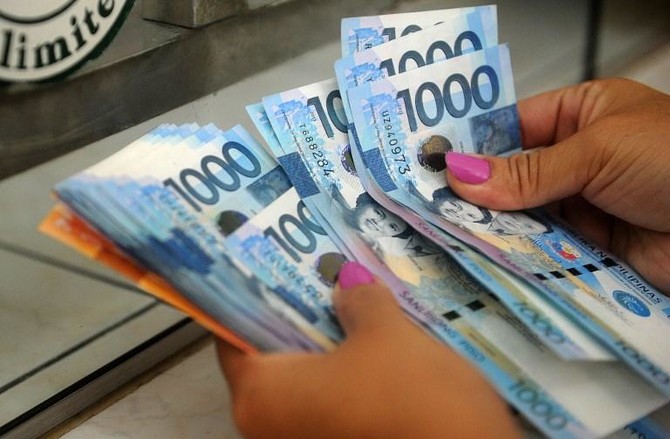
- For countries that run widening trade deficits, weaker currencies are posing risks to inflation, growth and financial stability
- For the stronger Asian economies, the Fed outlook does not move the needle as much as it did during its previous tightening cycles
Saudi Arabia’s Qiddiya to build region’s largest water theme park

- Aquarabia will also feature the first underwater adventure trip with diving vehicles
RIYADH: Saudi Arabia Qiddiya Investment Co. will construct the region’s largest water theme park as a cornerstone of its Six Flags Qiddiya City venture it was announced on Monday.
To be named Aquarabia, Qiddiya hopes to draw visitors from around the globe with 22 attractions and water experiences suitable for all family members, as well as some “world-first” attractions, Saudi Press Agency reported.
These attractions include the world’s first double water loop, the tallest water coaster with the highest jump, the longest and highest water racing track, and the tallest water slide.
Aquarabia will also feature the first underwater adventure trip with diving vehicles, catering to adventure enthusiasts with water sports areas designated for rafting, kayaking, canoeing, free solo climbing, and cliff jumping.
Additionally, the park will introduce the first surfing pool in the Kingdom, incorporating immersive design elements themed around ancient desert water springs and Qiddiya’s wildlife.
With sustainability in mind, Aquarabia will implement advanced systems capable of reducing water waste by up to 90 percent and decreasing energy consumption. As part of the Six Flags Qiddiya project, the venture, the first Six Flags of its kind outside North America, aims to recycle operational waste, diverting over 80 percent from landfill.
Scheduled to open in 2025, both Aquarabia and Six Flags Qiddiya City are situated within Qiddiya City, forming a fully walkable neighborhood offering a diverse array of activities, accommodations, dining options, and relaxation spots.
Abdullah Al-Dawood, managing director of Qiddiya Investment Co., hailed the announcement as a significant milestone for Qiddiya and the entertainment, tourism, and sports sectors in the Kingdom.
He emphasized that the projects will cater to diverse entertainment needs while contributing to economic diversification and job creation in the tourism sector.
The project also aims to meet the growing local demand for immersive entertainment experiences, particularly in water activities, aligning with the goals of Saudi Arabia’s Vision 2030 to enhance local tourism and employment opportunities.
The unveiling of Aquarabia follows the announcement of several other entertainment, sports, and cultural attractions in Qiddiya, including the world’s first multi-use gaming and electronic sports area, the multi-sport Prince Mohammed bin Salman Stadium and the Dragon Ball amusement park.
Saudi Arabia ascends as key destination for global talent: BCG report

RIYADH: Saudi Arabia has emerged as a key player in attracting global talent amid ongoing geopolitical shifts and financial uncertainty, moving up two spots on the list of preferred countries for workforce mobility.
The “Decoding Global Talent 2024” report by Boston Consulting Group highlights Saudi Arabia’s rise to the 26th most preferred country, underscoring the success of the Kingdom’s strategic initiatives to position itself as a global hub for professionals.
This fourth edition of the study draws insights from over 150,000 professionals across 188 nations, tracking global talent trends since 2014.
Riyadh’s rise to the 54th rank globally underscores its emergence as a hub of opportunity and progress in the eyes of global talent.
Christopher Daniel, managing director and senior partner at BCG, said: “As the global talent shortage becomes an increasingly pressing challenge for the world's foremost economies, Saudi Arabia is emerging as a pivotal player in narrowing this gap.”
He added: “With a significant proportion of respondents citing the quality of job opportunities, the attractive income, tax, and cost of living, as well as the assurance of safety, stability, and security as key reasons for choosing the Kingdom, it’s evident that Saudi Arabia’s strategic investments in its labor market are bearing fruit.”
Daniel noted that the Kingdom is leveraging labor migration to enhance its workforce, offering a secure and hospitable environment that caters to the diverse needs of international professionals.
“By fostering a job market that is attuned to the evolving aspirations of global talent while prioritizing their well-being, Saudi Arabia is positioning itself as a compelling destination for those seeking growth and fulfillment in their careers,” he said.
Furthermore, the report highlights that younger generations and individuals from rapidly expanding populations are particularly attracted to global mobility, pursuing diverse experiences and opportunities for professional growth.
With 23 percent of global professionals actively pursuing international positions and 63 percent remaining receptive, Saudi Arabia is well-positioned to capitalize on this trend.
The Kingdom offers an enriching environment for a globally oriented workforce to excel and progress in their careers, presenting an enticing option for individuals seeking both personal and professional advancement in an ever more interconnected global landscape.
Riyadh Air to expand fleet with additional aircraft orders, CEO reveals

RIYADH: Saudi Arabia’s Riyadh Air plans to bolster its aircraft lineup through additional orders, as it requires “a very large fleet” to establish itself alongside regional giants, stated the CEO.
This move comes as the Kingdom’s second flag carrier, backed by the country’s Public Investment Fund, ordered 39 Boeing 787-9 jets last year, with options for 33 more.
It also aligns well with Saudi Arabia’s goal to expand its aviation industry and attract more tourists, broadening its airline capacity beyond pilgrimage travel, which currently forms the backbone of the country’s inbound tourism.
“We need a very large fleet, we’re going to make a number of additional orders,” CEO of Riyadh Air, Tony Douglas, said in an interview with Bloomberg Television.
He added: “We will be making a narrowbody order, we’ll probably be doing another large order after that to build us up to scale.”
During the interview, Douglas, who previously led the Abu Dhabi flag carrier Etihad Airways, expressed being “very conscious” of potential delays to aircraft deliveries. This concern arises as both Boeing and Airbus SE grapple with production challenges amidst record demand and supply issues at the two plane makers.
The establishment of a second Saudi national airline alongside the existing flag carrier Saudia is part of the Kingdom’s economic diversification plan.
In November 2023, Douglas expressed confidence in the demand for travel. “We’re not well enough connected. It’s as simple as that,” he said at the time.
The new airline stands to benefit from Saudi Arabia’s rapidly growing economy and the increasing influx of tourists to the Kingdom. Riyadh Air does not intend to pursue mergers and acquisitions to fuel its growth. “No, it’s organic,” Douglas emphasized at the time.
The initial destinations will include major cities in Europe, the US East Coast, and Canada, with the inaugural flight scheduled to depart by June 2025.
By that time, Riyadh Air will have secured slots at major airports, Douglas mentioned, although hubs like London Heathrow are already operating close to capacity.
“It won’t be easy ... but we have no reason to be anything other than confident that we’ll resolve all of that,” he said at the time.
Saudi Arabia and Egypt retain top spots in MENA travel preferences: Wego study

RIYADH: Saudi Arabia and Egypt remain dominant destinations among Middle East and North Africa travelers in 2024, retaining top spots in international preferences, according to a study.
Singapore-based travel booking app Wego ranked Egypt as the top destination for tourists from the region between January and April, followed by the Kingdom, with India consistently holding the third spot since 2016.
Saudi Arabia’s second spot on the wish list is a clear indication of the Kingdom’s progress as a global tourist destination, aligning with its National Tourism Strategy aiming to attract 150 million visitors by 2030.
“We are excited to see Egypt emerge as the leading destination for travelers in the MENA region during Q1 2024. According to Wego's data, Egypt stands out as a favored choice among travelers seeking unique cultural experiences and diverse attractions,” said Mamoun Hmedan, chief business officer at Wego.
He added: “Meanwhile, the United Kingdom retains its position as the preferred European destination for Middle Eastern travelers.”
Among Middle East destinations, the top three — Egypt, Saudi Arabia, and UAE —maintained their positions from 2023. Egypt and the Kingdom, in particular, have consistently held the top two spots since Wego began tracking customer trends over a decade ago.
The study utilized traveler searches and hotel booking data from its website as the foundation for its findings.
The report further revealed that the UAE ranked as the fourth favorite destination, followed by Pakistan, Kuwait, and Turkiye.
Meanwhile, China dropped one spot, reaching the 27th top destination among MENA travelers.
The UK remains the top European destination from the Middle East, holding the first spot for 10 of the last 11 years, briefly overtaken during the pandemic. Italy has notably surged from fourth to second.
Italy, a top global tourist spot, consistently ranks in the top ten European destinations for Middle East travelers.
This year marks Italy’s debut in the top three. Joint investments between Saudi Arabia and Italy in late 2023, along with direct flights by ITA Airways to Riyadh and Jeddah, signify growing ties.
Countries farther from the Gulf region, such as Morocco, Indonesia, and the US experienced the most decline among top destinations.
This trend continued in 2024, with Malaysia, the Philippines, and the US dropping out of the global top 10, while Kuwait, Pakistan, and Jordan, which entered the top ten last year, remain preferred destinations for MENA travelers.
Closing Bell: TASI edges down to close at 12,372 points
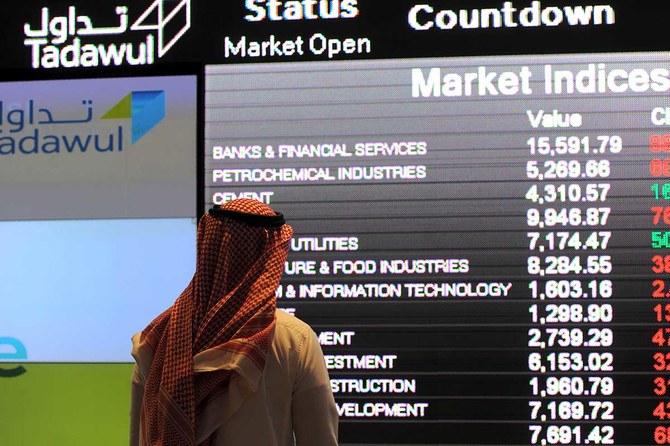
RIYADH: Saudi Arabia’s Tadawul All Share Index dipped on Monday, losing 0.61 points, to close at 12,372.50.
The total trading turnover of the benchmark index was SR7.36 billion ($1.96 billion) as 116 stocks advanced, while 110 retreated.
Similarly, the MSCI Tadawul Index decreased by 2.63 points, or 0.17 percent, to close at 1,549.13.
On the other hand, the parallel market, Nomu, increased, gaining 0.85 points, to close at 26,791. This comes as 20 stocks advanced while as many as 39 retreated.
The best-performing stock was Bupa Arabia for Cooperative Insurance Co. as its share price surged by 10 percent to SR275.
Other top performers included the Mediterranean and Gulf Insurance and Reinsurance Co. and Al-Rajhi Company for Cooperative Insurance, whose share prices soared by 9.97 percent and 9.93 percent, to stand at SR33.10 and SR148.40 respectively.
The worst performer was Arabian Internet and Communications Services Co., whose share price dropped by 4.46 percent to SR334.4.
Saudi Cable Co. as well as Gulf Insurance Group, did not perform well, as their share prices dropped by 3.55 percent and 3.01 percent to stand at SR76 and SR33.85, respectively.
On the announcements front, Bupa Arabia for Cooperative Insurance Co’s profits surged to SR359 million, during the first quarter of 2024, up 91 percent from SR189 million in the same quarter of the previous year.
According to Al-Ekhbariya, net investment income reached SR158 million in the first quarter compared to SR102 million in the same quarter of the previous year, marking a 54 percent increase.
Insurance revenues for the current quarter amounted to SR4.37 million, compared to SR3.75 million in the same quarter of the previous year, reflecting a significant increase of 16.63 percent.
This growth is primarily attributed to operational expansion and an increase in the number of insured individuals, as reported by the channel.
Al-Rajhi Company for Cooperative Insurance also announced its interim financial results for the period ending March 31 with revenues increasing to SR1.4 million from to SR865,298 during the similar quarter of the previous year.
This marked an increase of 50.6 percent attributed the increase to a growth in overall business volume, according to a Tadawul statement.
Similarly, net profit after zakat attributable to shareholders for the current quarter amounted to SR111,376, compared to SR61,282 during the similar quarter in previous year, an increase of 81.7 percent.
According to the company, the improvement stemmed from increased net insurance service results, rising to SR113,229 from SR97,616 in the previous year, a 16 percent surge due to business growth.


